

August 1956: The Suez Canal, presided over by a colossal statue of its creator, Ferdinand de Lesseps. (Gerard Gery/Paris Match/Getty Images)

Happier Times: Gamal Abdel Nasser (left) meets Anthony Eden in Cairo on February 22, 1955. The smiles did not last. Two days later, Eden’s Baghdad Pact was signed, creating a regional power bloc against Nasser. Four days after that, on February 28, the Israeli Defense Force staged a raid on the Gaza Strip. (Popperfoto/Getty Images)
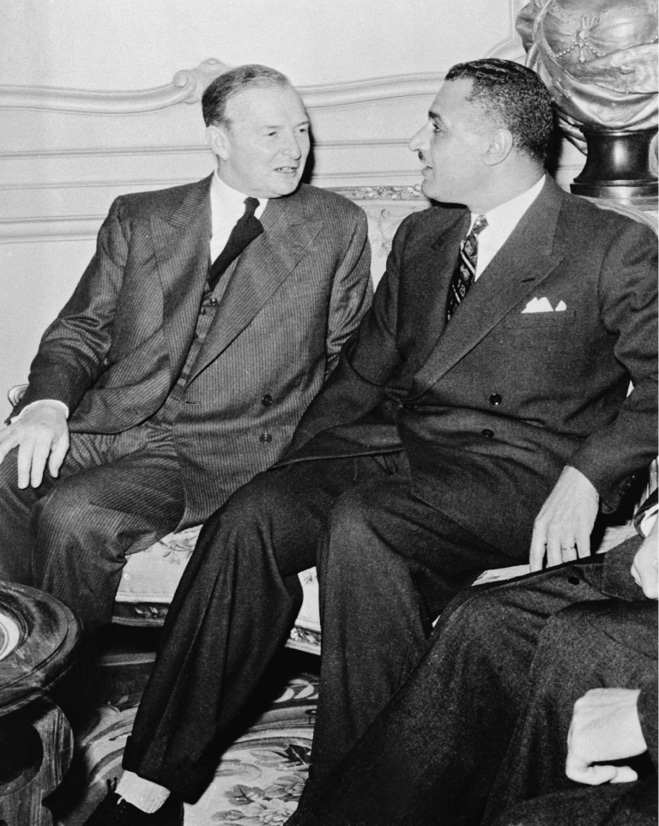
March 1, 1956: British foreign secretary Selwyn Lloyd (left) meets Nasser in Cairo. During their dinner, the British commander John Bagot Glubb was fired from his position at the head of the Jordanian army by King Hussein of Jordan. This event triggered Eden’s desire to have Nasser “murdered.” (Bettmann Archive/Getty Images)
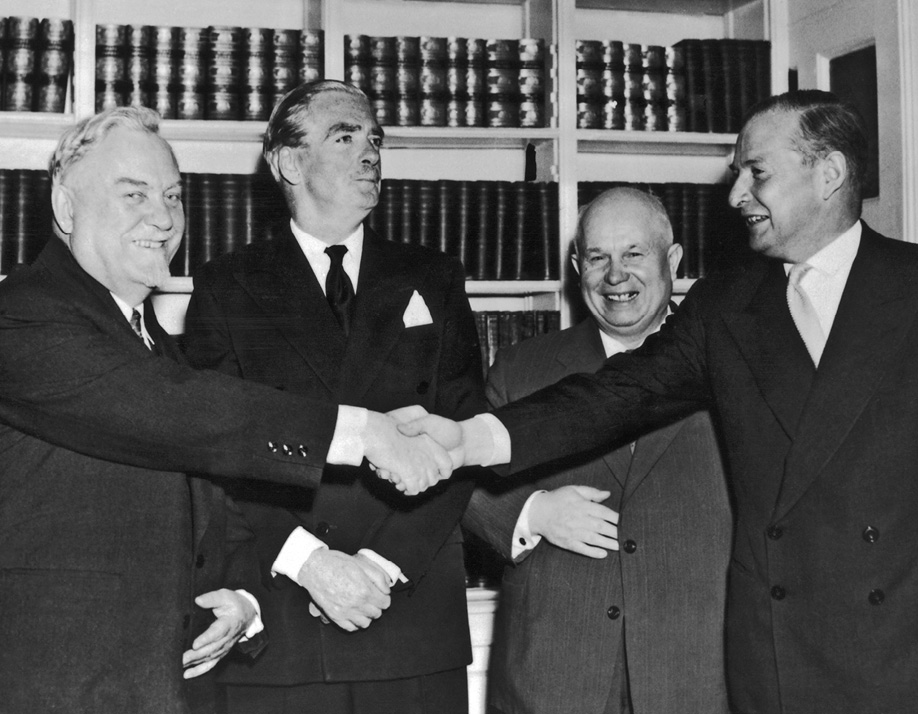
April 1956: Soviet leaders visit London. Left to right: Nikolai Bulganin, Anthony Eden, Nikita Khrushchev, Selwyn Lloyd. “Bulganin can vote Labour if he likes,” Khrushchev remarked, “but I’m going to vote Conservative.” (Keystone-France/Gamma-Rapho/Getty Images)

July 1956: Nasser (left) with his fellow leaders of the Non-Aligned Movement, Jawaharlal Nehru of India (center) and Josip Broz Tito of Yugoslavia (right). The three had been meeting at Tito’s villa in the Brioni archipelago when Nasser received the news that the United States was canceling his Aswan Dam project. He would respond by nationalizing the Suez Canal Company. (AFP/Getty Images)

Nasser is cheered by huge crowds after nationalizing the Suez Canal Company on July 26, 1956. (Keystone-France/Gamma-Keystone/Getty Images)

July 31, 1956: Though they were enraged by Nasser’s nationalization, Lloyd (left) and Eden (right) could not go to war immediately. Their American allies pushed them into talks. (Philippe Le Tellier/Paris Match/Getty Images)
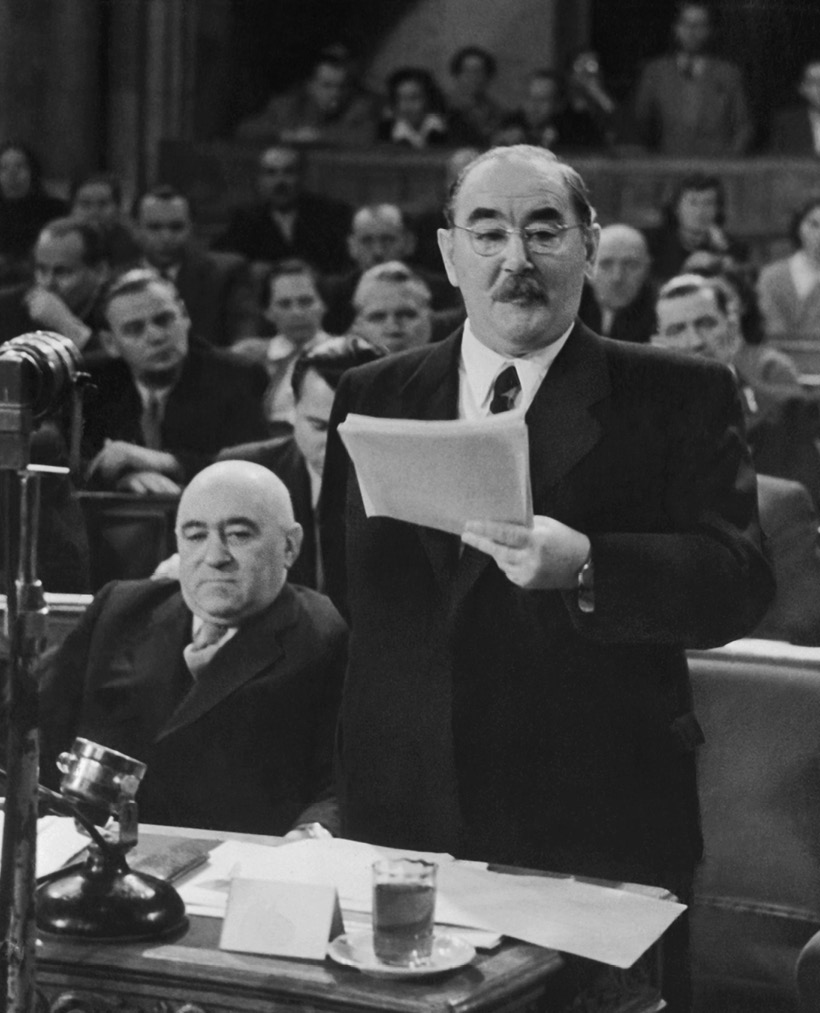
The widely loathed Stalinist leader of Hungary, Mátyás Rákosi (seated, left), listens as his more moderate opponent, Imre Nagy (standing), addresses parliament. (Bettmann Archive/Getty Images)

David Ben-Gurion, prime minister of Israel. (ullstein bild/ullstein bild/Getty Images)

Allen Dulles, director of the CIA. The CIA and MI6 were planning a coup in Syria at the time the British and French governments would launch their invasion of Egypt. (Bettmann Archive/Getty Images)

Though CIA agents on the ground in Egypt admired and supported Nasser, Secretary of State John Foster Dulles preferred the Saudis as potential leaders of the Arab world. Left to right: President Dwight D. Eisenhower, King Saud of Saudi Arabia, and Vice President Richard Nixon. (Bettmann Archive/Getty Images)

The British and French governments realized they would have to plan their war against Nasser without American help. Eden (left) welcomes French prime minister Guy Mollet (center) and Minister for External Affairs Christian Pineau (right) to London, September 1956. (Central Press/Hulton Archive/Getty Images)

American-British relations were strained over Suez. John Foster Dulles (left) discusses the crisis at the United Nations with a defensive Selwyn Lloyd. (Lisa Larsen/The LIFE Picture Collection/Getty Images)
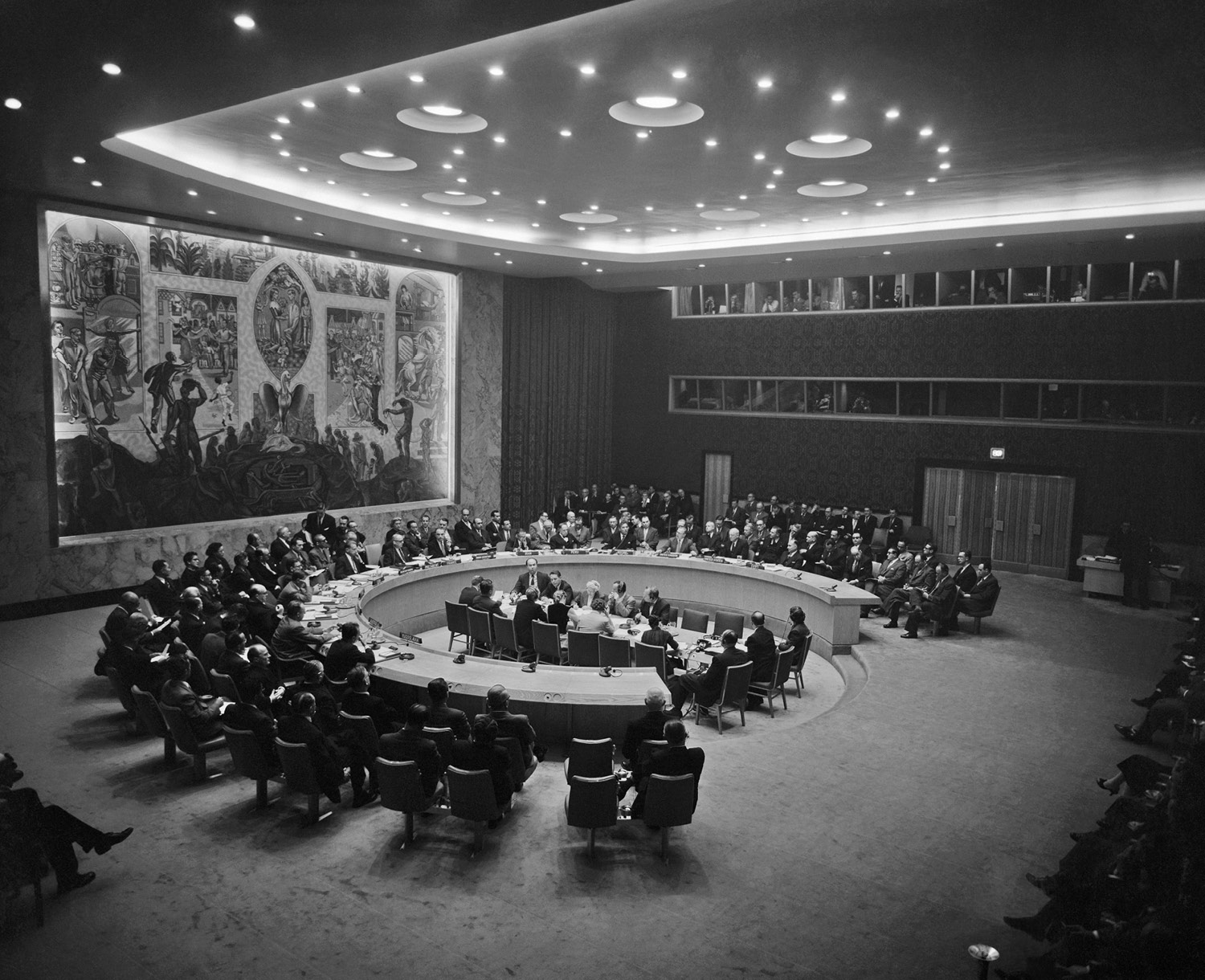
October 1956: The United Nations Security Council considers the dispute over control of the Suez Canal. (Bettmann Archive/Getty Images)

October 22, 1956: French forces kidnap and handcuff the leaders of Algeria’s FLN rebel movement. Left to right: Mostefa Lacheraf, Mohammed Boudiaf, Hocine Aït Ahmed, Mohammed Khider, and Ahmed Ben Bella. (GAMMA/Gamma-Keystone/Getty Images)

October 23, 1956: Anti-Soviet protesters in Budapest haul down a giant statue of Joseph Stalin in Heroes Square. (Bettmann Archive/Getty Images)
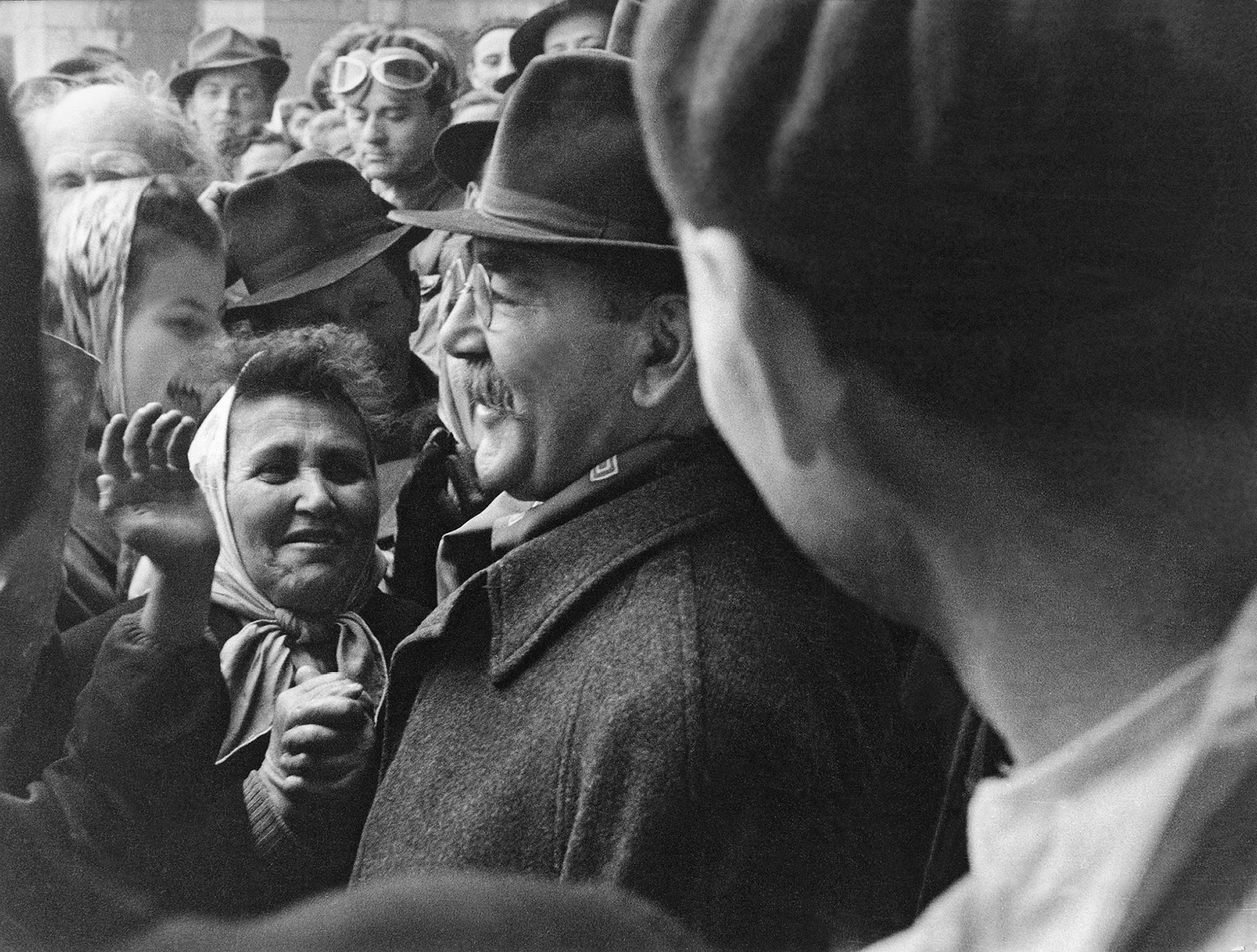
The Soviets initially allowed Imre Nagy (center) to become leader of Hungary. He had popular support but was a cautious reformer. (ullstein bild/ullstein bild/Getty Images)

Pál Maléter, the charismatic Hungarian colonel who became a rebel leader at the Kilián barracks and then minister of defense. (Keystone-France/Gamma-Keystone/Getty Images)
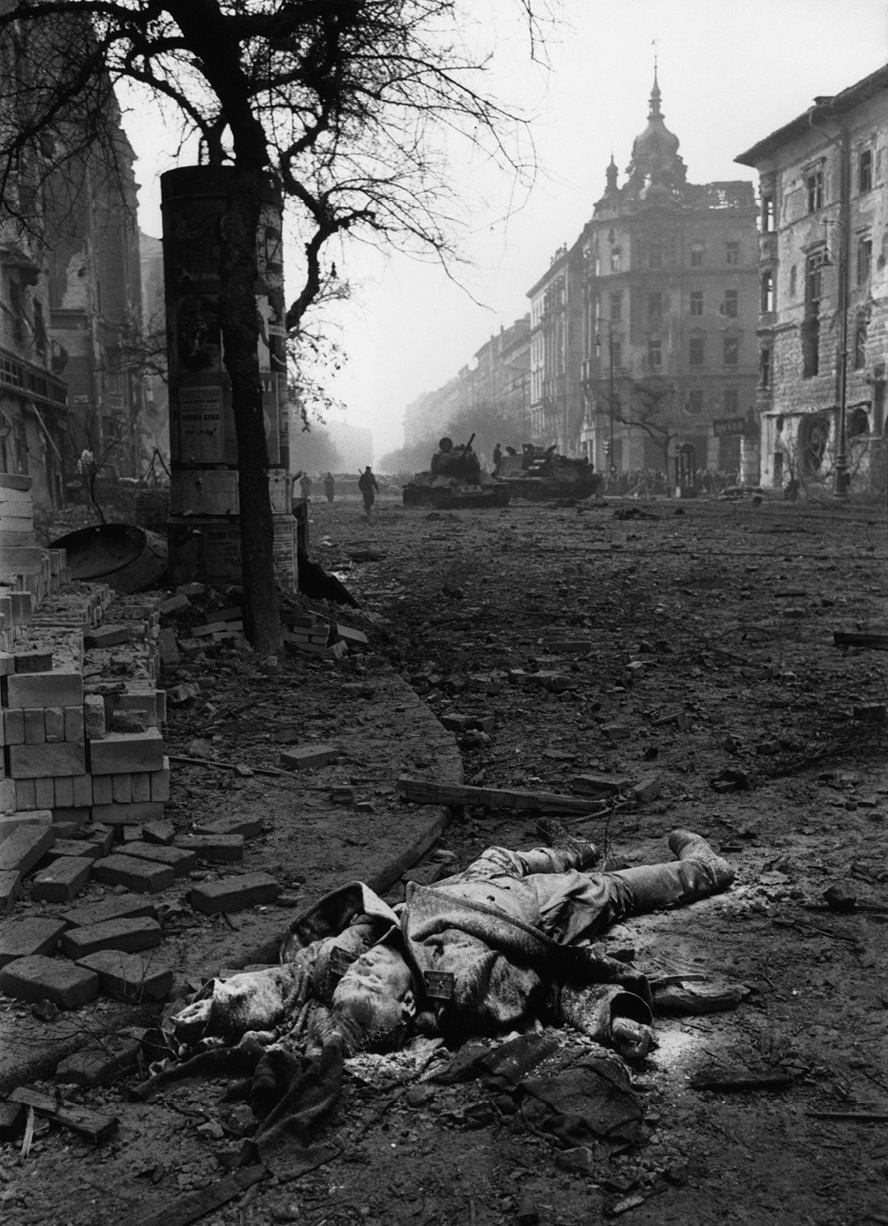
A Soviet officer, his body covered in slaked lime, lies dead near the rebel stronghold at the Kilián barracks in Budapest. (Erich Lessing/Magnum Photos)
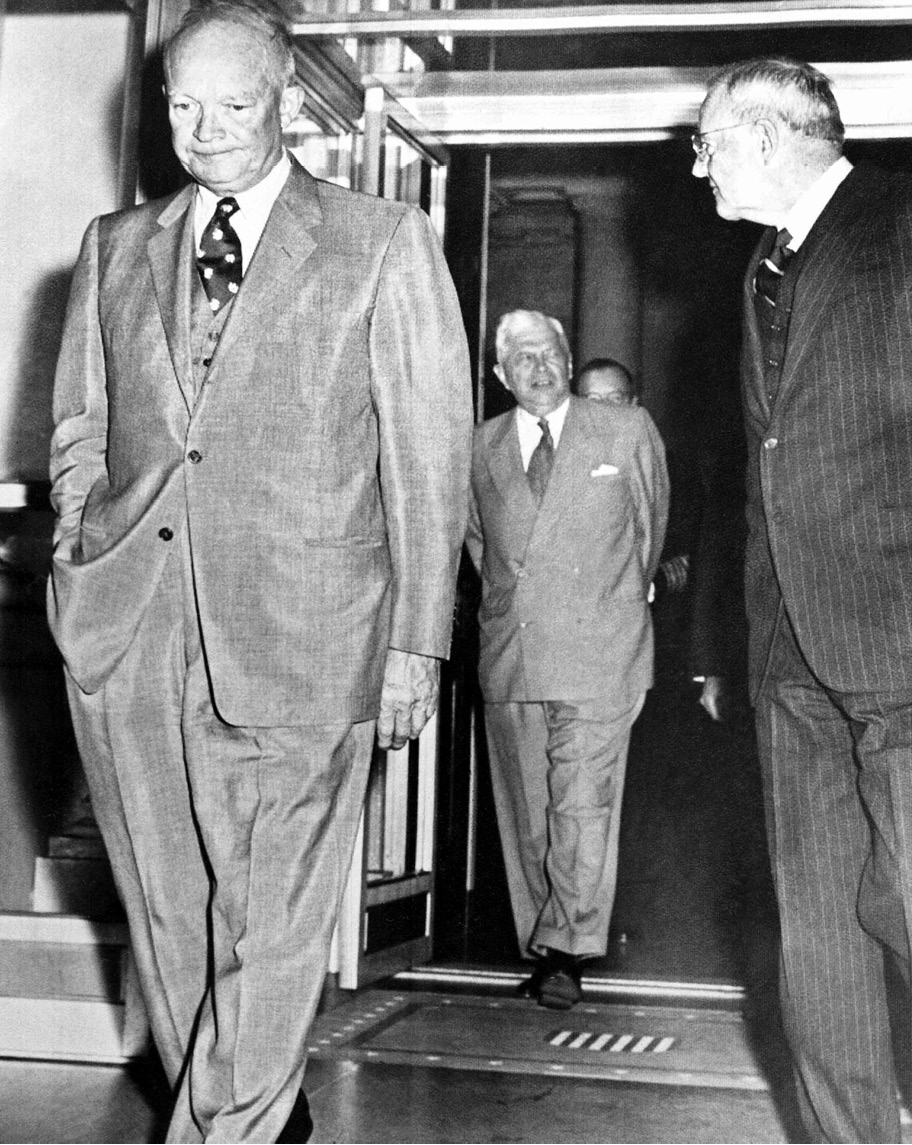
“Goddamn it, we’re going to apply sanctions, we’re going to the United Nations, we’re going to do everything that there is so we can stop this thing”: A tightlipped Eisenhower (left) walks through the north portico of the White House on October 29, 1956, after hearing of the Israeli invasion of Egypt. Charles Wilson, secretary of defense (center); Foster Dulles (right). (AP/Press Association Images)
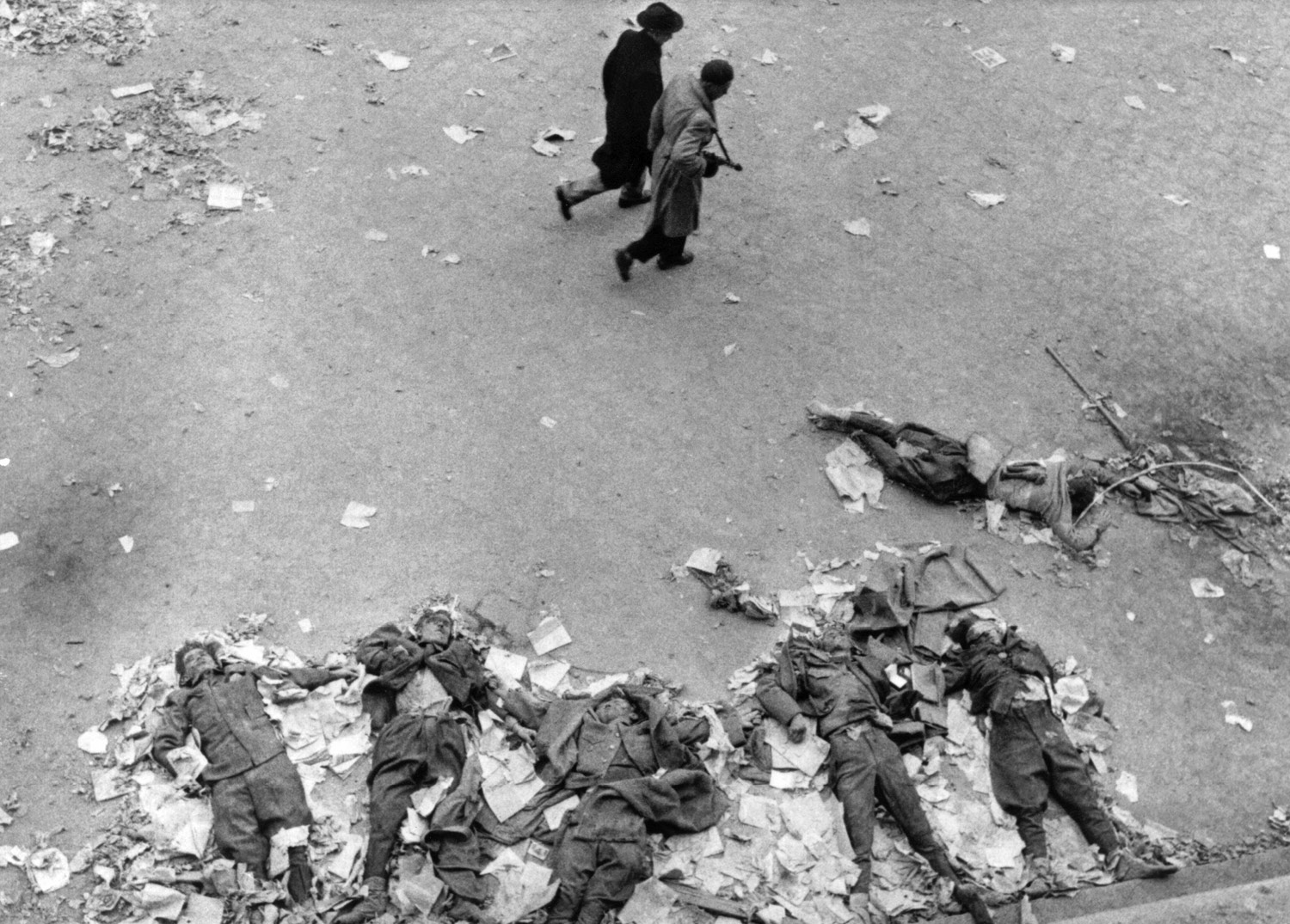
October 30, 1956: The beaten and mangled corpses of AVH (State Security Police) men lie in the streets of Budapest. Their lynching would prompt both Khrushchev and Mao Tse-tung to think again about allowing change in Hungary. (Photo by Jack Esten/Stringer/Getty Images)

October 30, 1956: Ariel Sharon (left, with map) and his Israeli Defense Force men at the Mitla Pass in Sinai. Israel invaded Egypt to give Britain and France an excuse to intervene as “peacekeepers.” (Ministry of Defense/Getty Images)
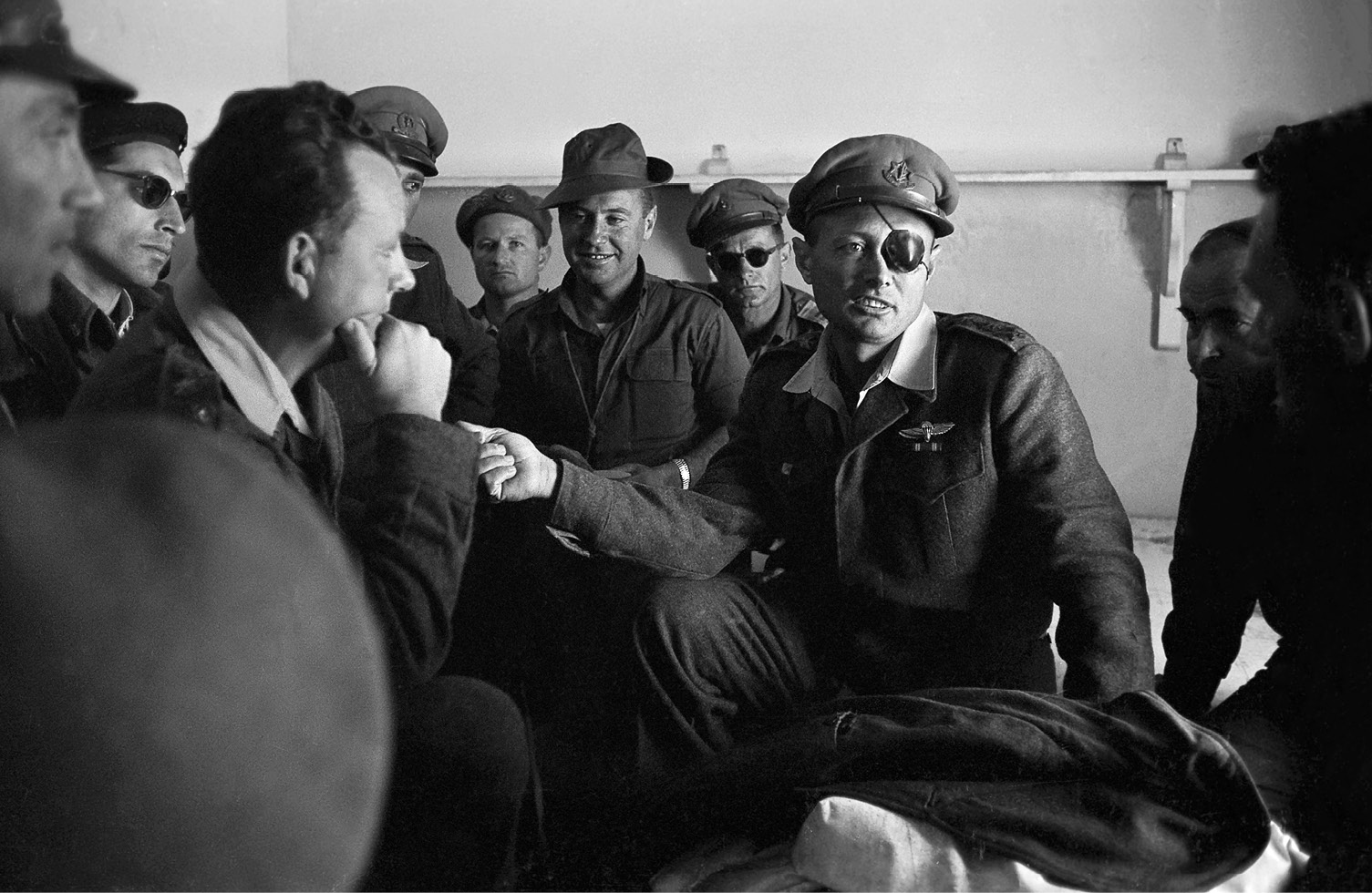
Moshe Dayan, the IDF’s chief of general staff, with troops in Sinai. (Francois Pages/Paris Match/Getty Images)
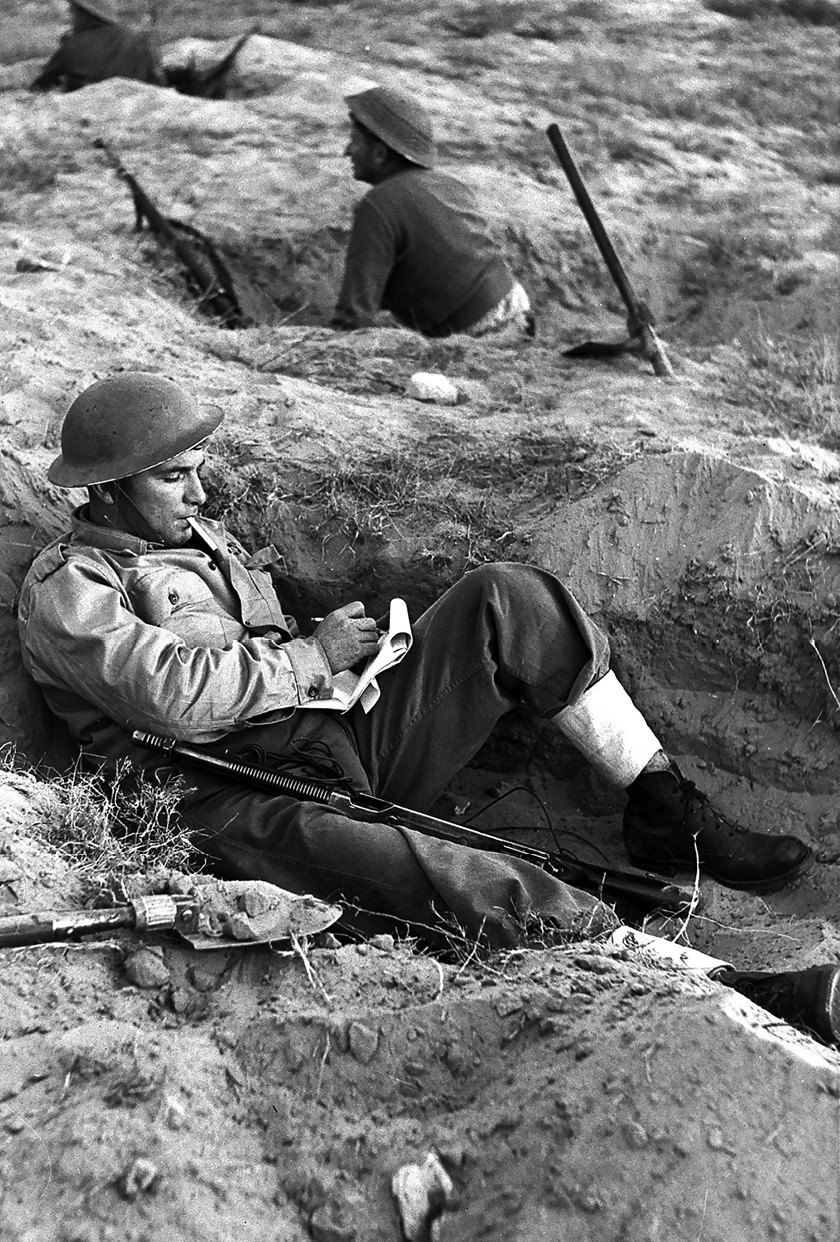
November 1, 1956: An Israeli soldier writing a letter home during a break in the fighting in Rafah, Gaza Strip. The United Nations reported that hundreds of people were summarily executed by the IDF in Gaza during the Suez War. (GPO/Getty Images)
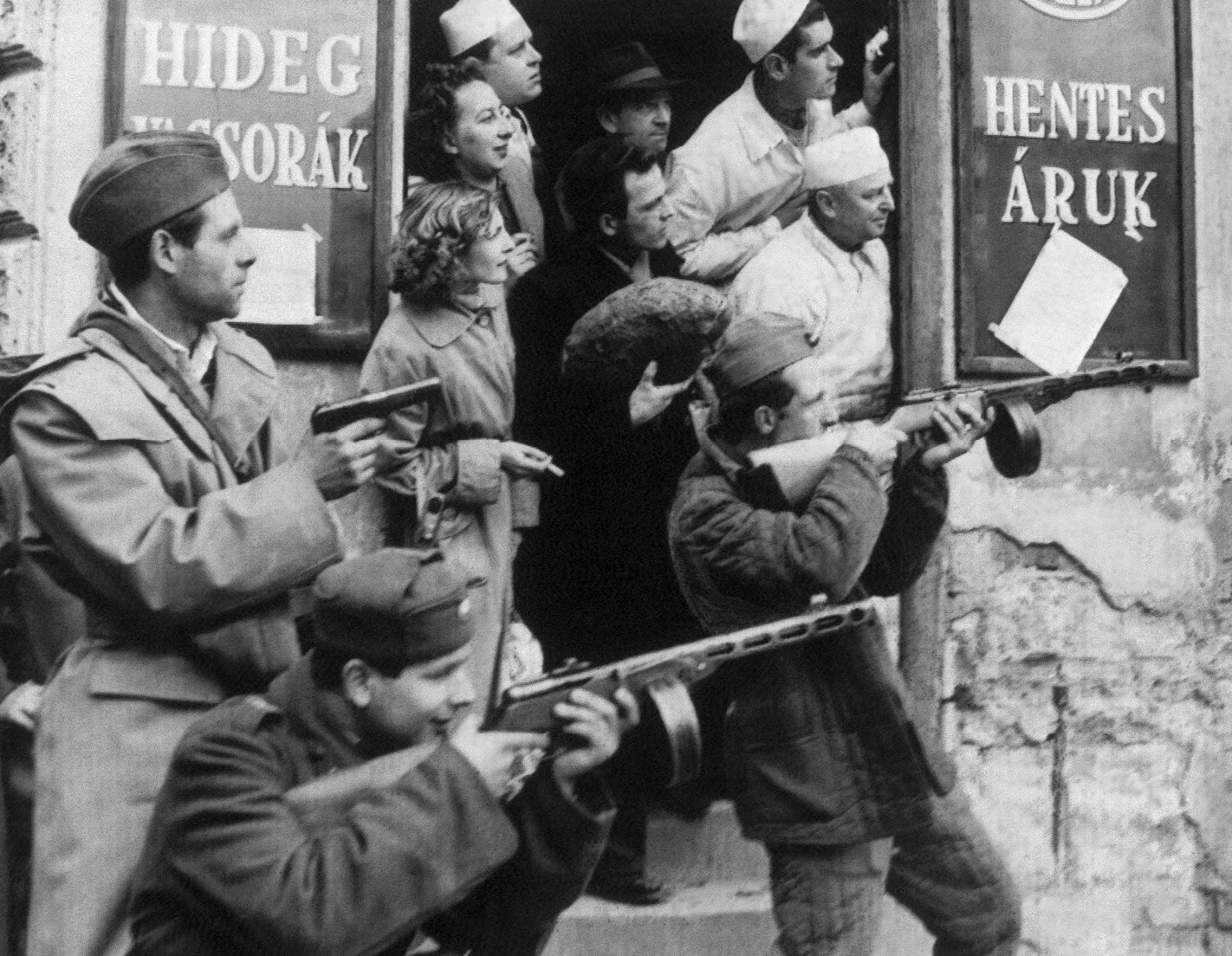
November 2, 1956: Rebel skirmishes continued in Budapest, though many believed at this point that they had won. Two days later, the Soviet army would crush the rebellion. (AP/Press Association Images)
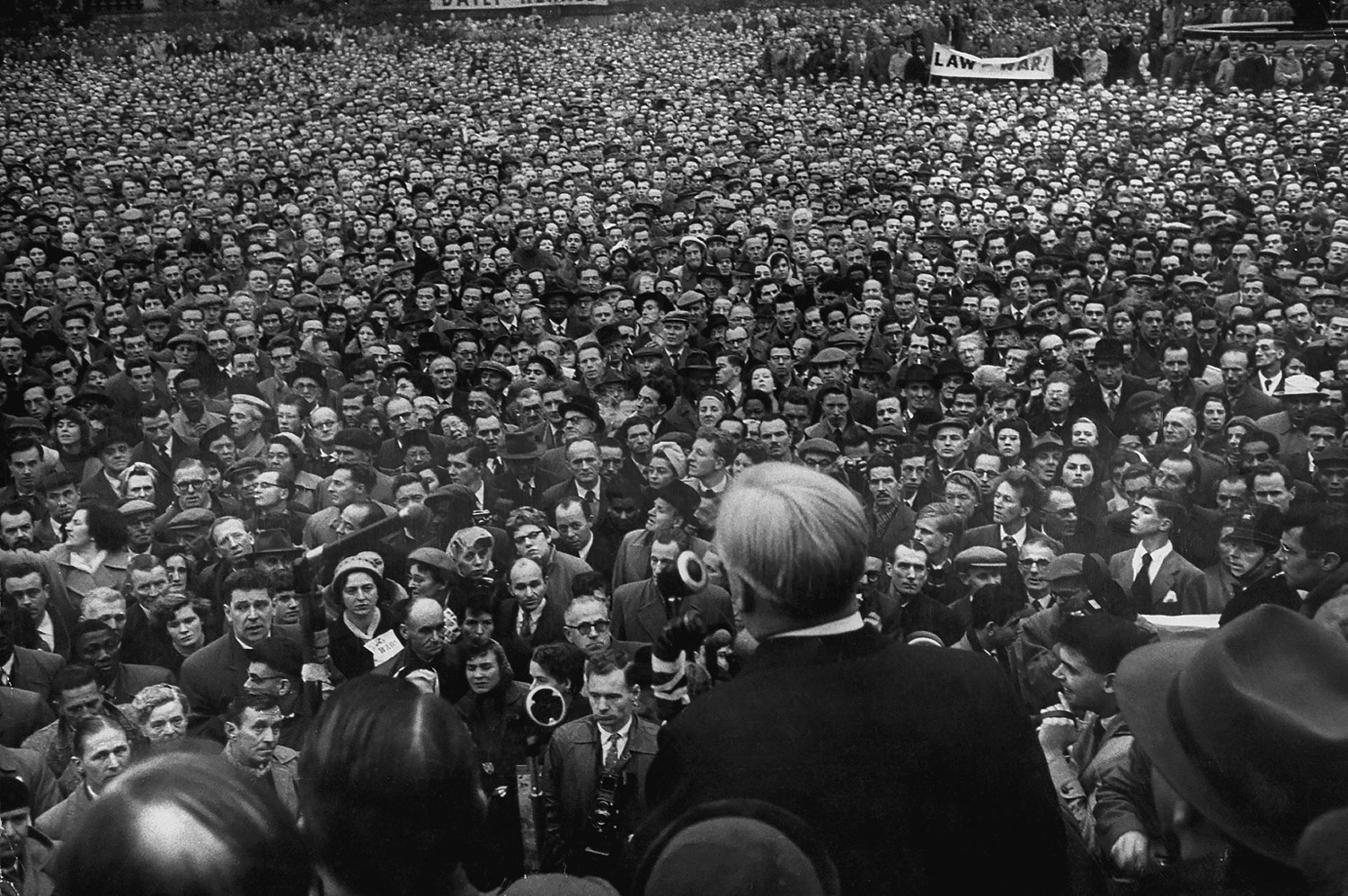
November 4, 1956: Thousands gather in Trafalgar Square, London, to protest against the Suez War. Labour MP Aneurin Bevan told the crowd that Eden “is either a knave or a fool. In both capacities we do not want him.” (Mark Kauffman/The LIFE Picture Collection/Getty Images)

Soviet tanks roll through the streets of Budapest. (Keystone-France/Gamma-Keystone/Getty Images)
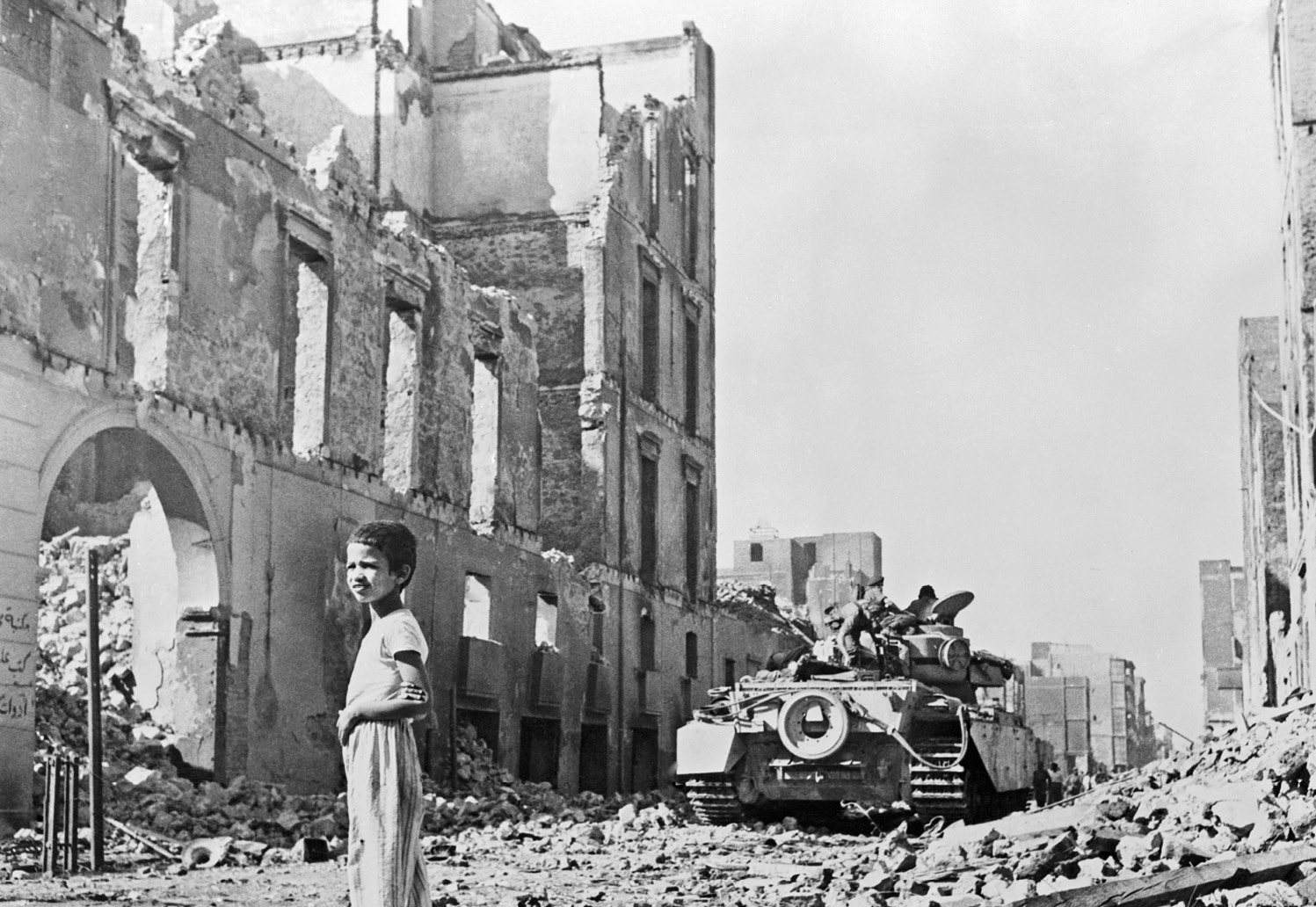
An Egyptian boy near a British tank in Port Said. (Bettmann/Getty Images)
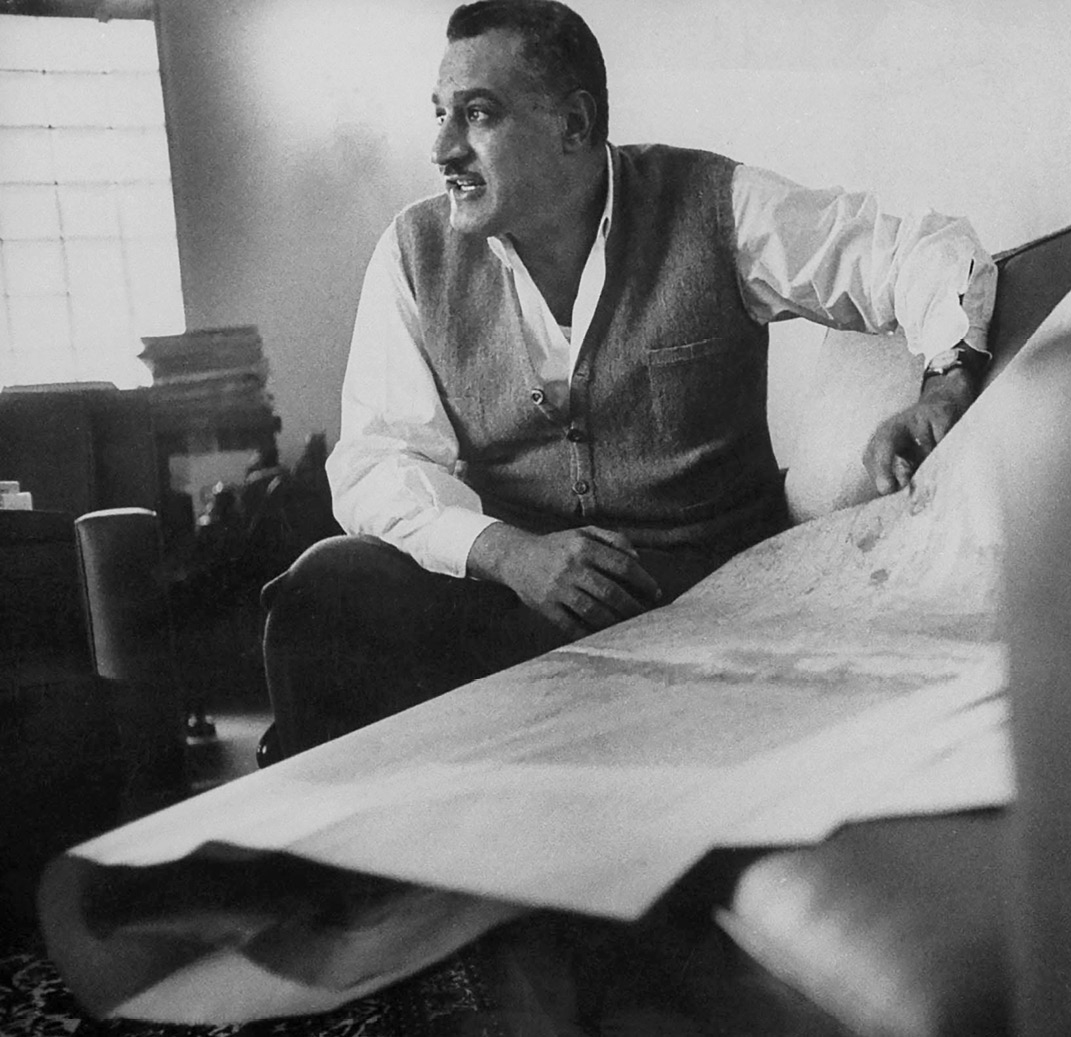
Nasser at his home after hearing of the Anglo-French invasion of Port Said. (Howard Sochurek/The LIFE Picture Collection/Getty Images)
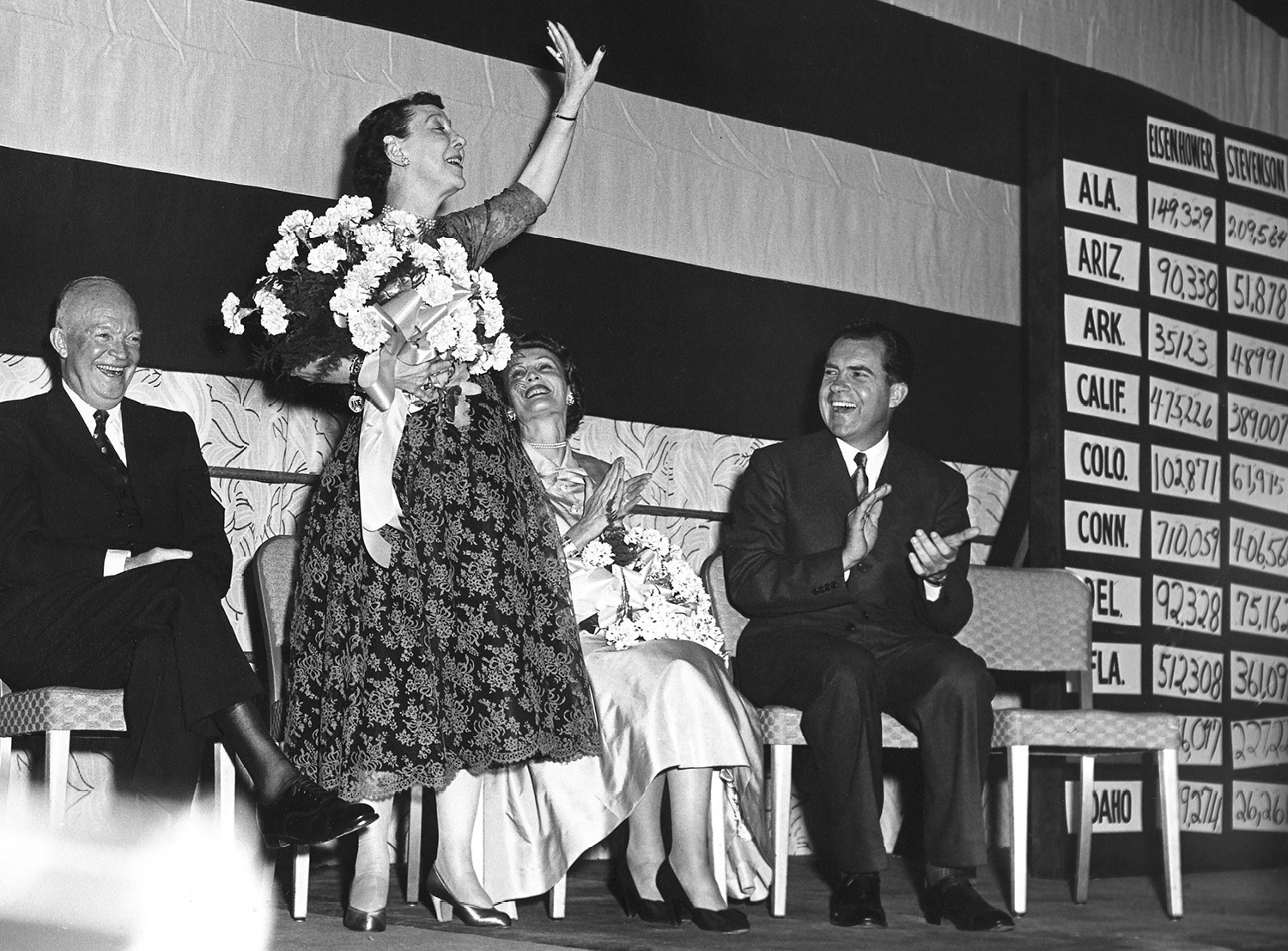
November 6, 1956: Dwight and Mamie Eisenhower and Patricia and Richard Nixon celebrate as the American people vote to give the president a second term. (PhotoQuest/Getty Images)
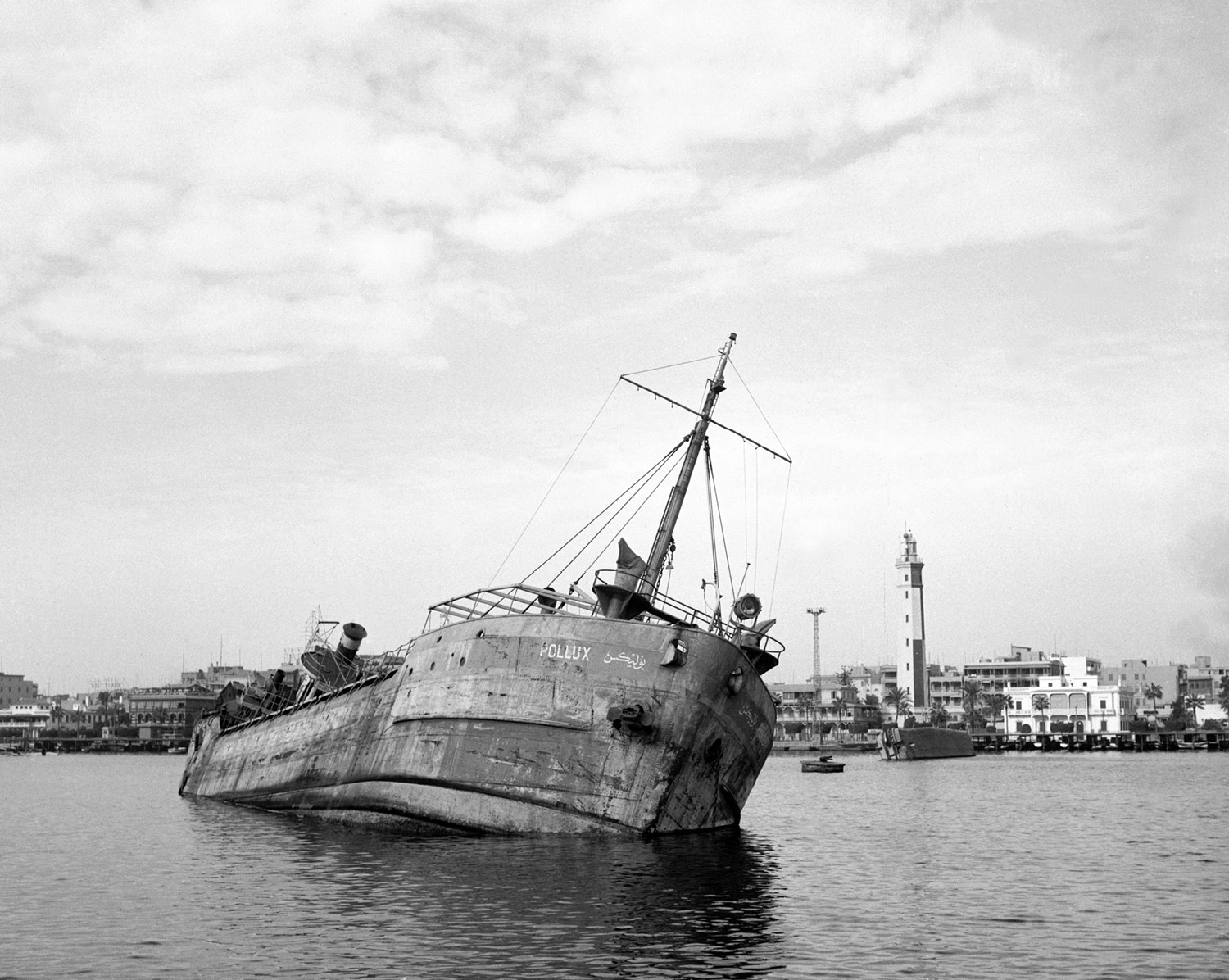
One of the blockships sunk by Egyptian forces in the Suez Canal to cut it off during the war. The British minister Anthony Nutting admitted, “In one case at least we had actually done Nasser’s job for him by sinking a blockship after it had taken up its position.” (STAFF/AFP/Getty Images)

November 1956: British soldiers sit on a captured Egyptian gun. Despite the jovial mood here, Britain’s Suez adventure would end in disaster.

THE VICTORS
Eisenhower campaigns for re-election in New York City. (Bert Hardy/Getty Images)

Nasser is hoisted aloft by cheering crowds in Port Said after Anglo-French forces withdraw from Egypt in December 1956. (Rolls Press/Popperfoto/Getty Images)